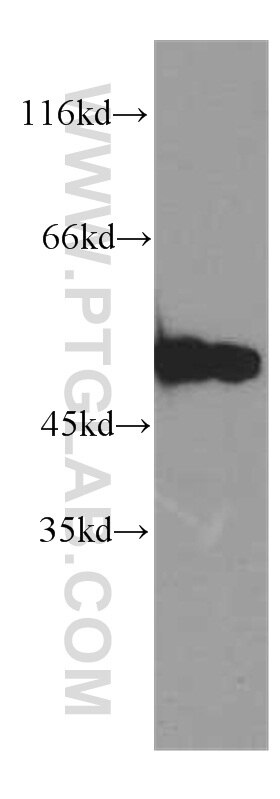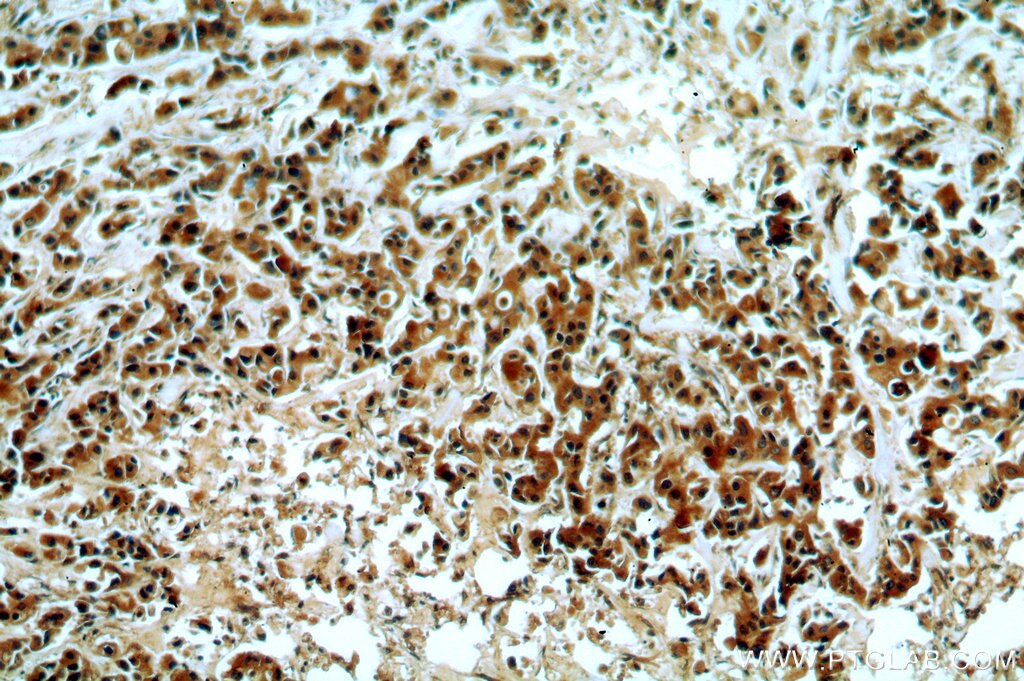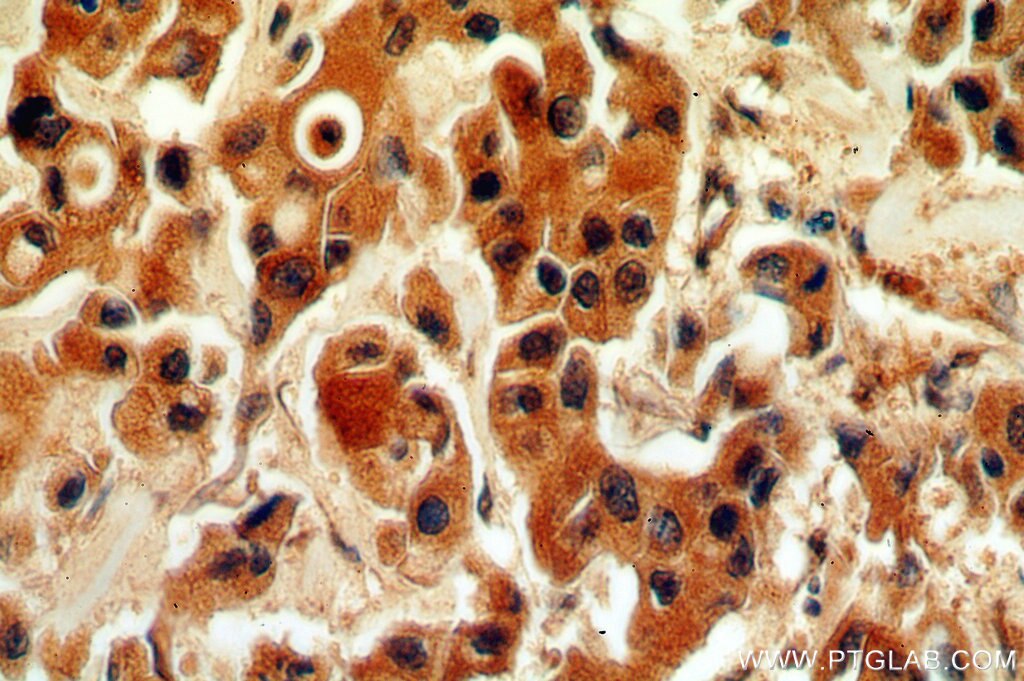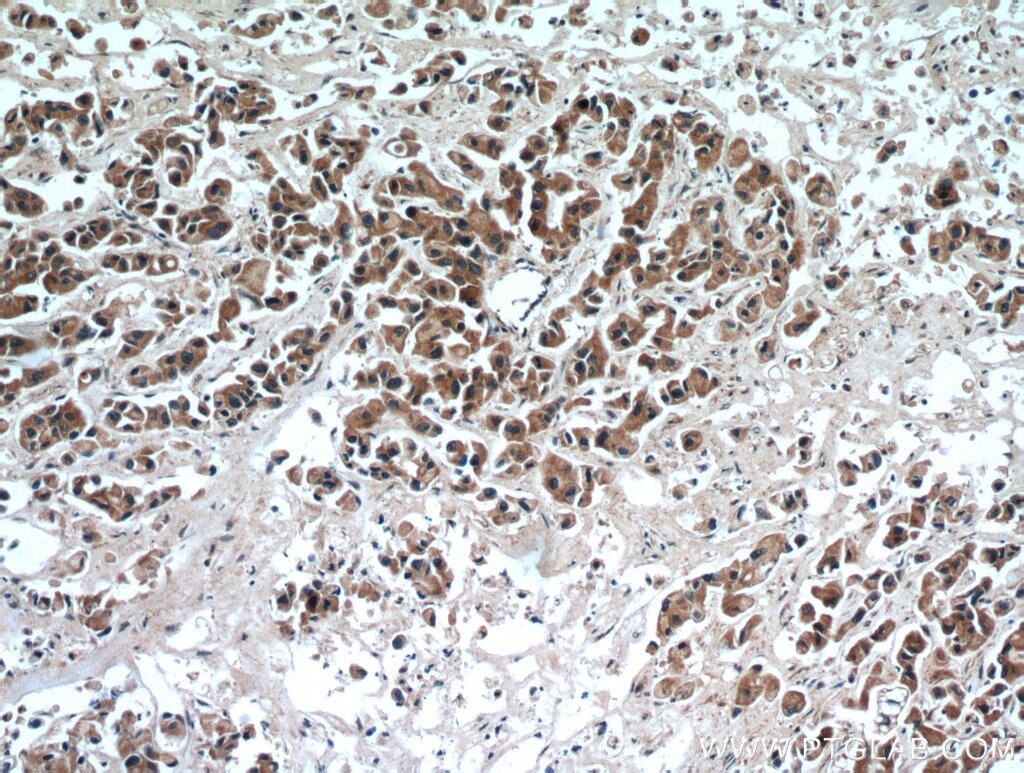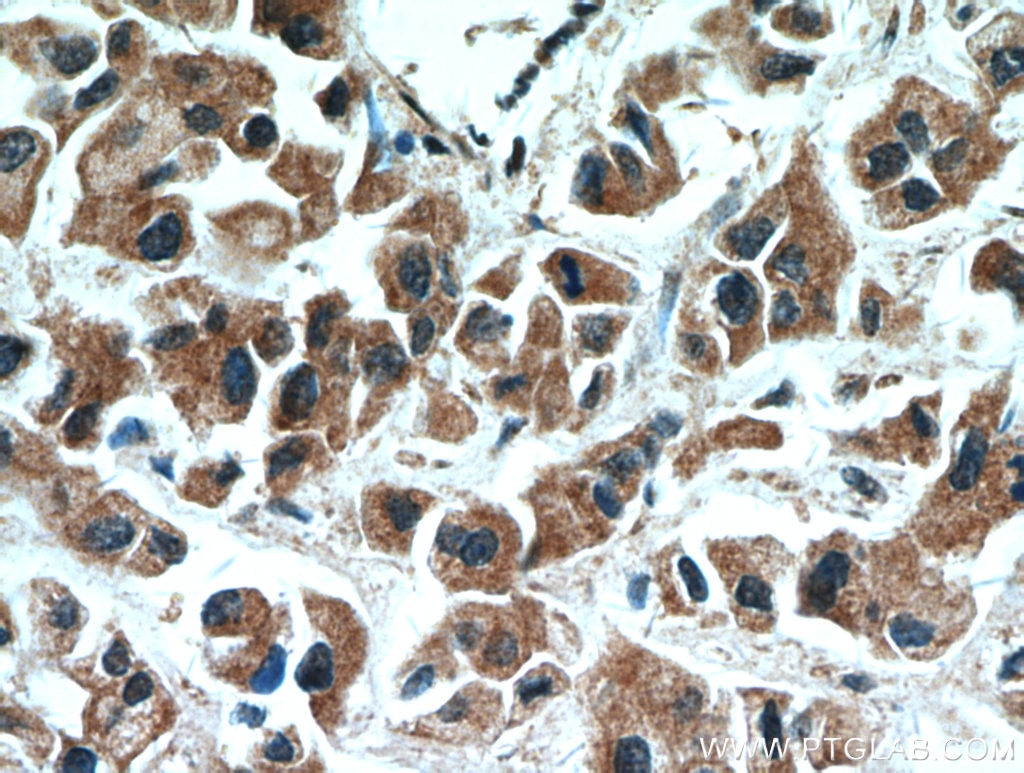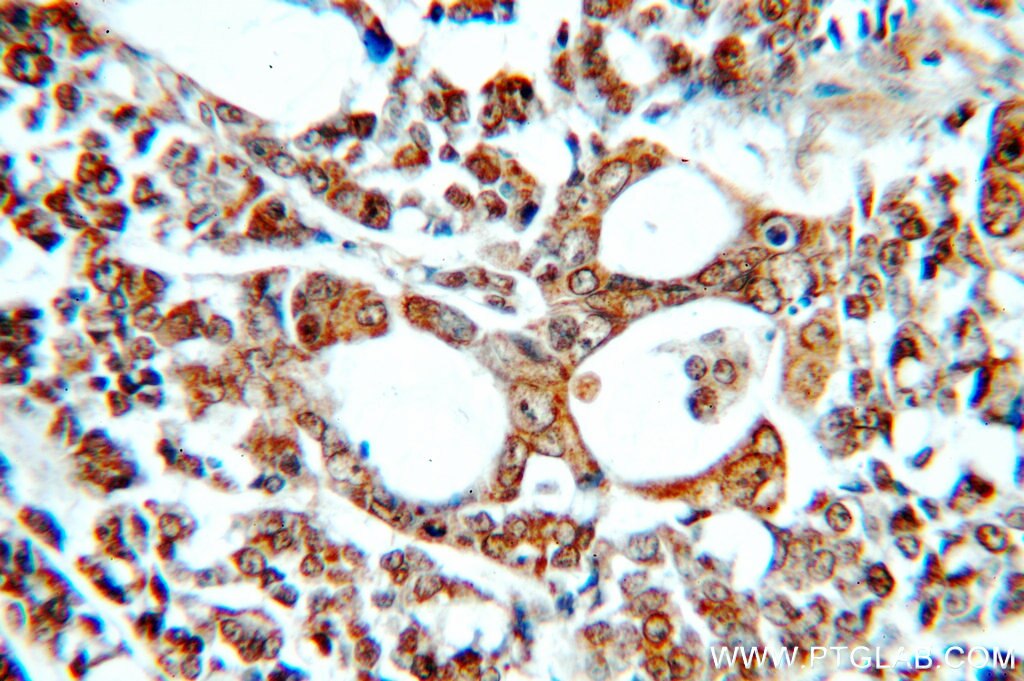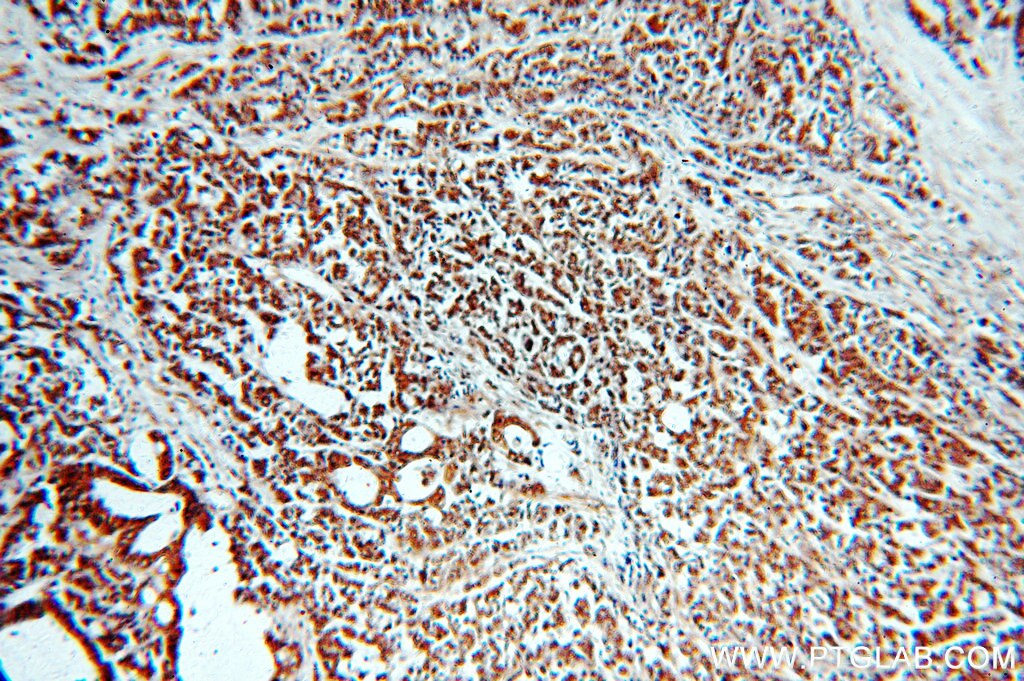SMAD3 Polyklonaler Antikörper
SMAD3 Polyklonal Antikörper für ELISA
Wirt / Isotyp
Kaninchen / IgG
Getestete Reaktivität
human und mehr (2)
Anwendung
WB, IF, ELISA
Konjugation
Unkonjugiert
Kat-Nr. : 51145-1-AP
Synonyme
Geprüfte Anwendungen
Veröffentlichte Anwendungen
| WB | See 14 publications below |
| IF | See 1 publications below |
Produktinformation
51145-1-AP bindet in WB, IF, ELISA SMAD3 und zeigt Reaktivität mit human
| Getestete Reaktivität | human |
| In Publikationen genannte Reaktivität | human, Maus, Ratte |
| Wirt / Isotyp | Kaninchen / IgG |
| Klonalität | Polyklonal |
| Typ | Antikörper |
| Immunogen | Peptid |
| Vollständiger Name | SMAD family member 3 |
| Berechnetes Molekulargewicht | 48 kDa |
| GenBank-Zugangsnummer | BC050743 |
| Gene symbol | SMAD3 |
| Gene ID (NCBI) | 4088 |
| Konjugation | Unkonjugiert |
| Form | Liquid |
| Reinigungsmethode | Antigen-Affinitätsreinigung |
| Lagerungspuffer | PBS with 0.02% sodium azide and 50% glycerol |
| Lagerungsbedingungen | Bei -20℃ lagern. Aliquotieren ist bei -20oC Lagerung nicht notwendig. 20ul Größen enthalten 0,1% BSA. |
Hintergrundinformationen
SMAD family member 3 (SMAD3), also named Mothers against decapentaplegic homolog 3. Receptor-regulated SMAD (R-SMAD) that is an intracellular signal transducer and transcriptional modulator activated by TGF-beta (transforming growth factor) and activin type 1 receptor kinases. Binds the TRE element in the promoter region of many genes that are regulated by TGF-beta and, on formation of the SMAD3/SMAD4 complex, activates transcription. Also can form a SMAD3/SMAD4/JUN/FOS complex at the AP-1/SMAD site to regulate TGF-beta-mediated transcription. Has an inhibitory effect on wound healing probably by modulating both growth and migration of primary keratinocytes and by altering the TGF-mediated chemotaxis of monocytes. This effect on wound healing appears to be hormone-sensitive. Regulator of chondrogenesis and osteogenesis and inhibits early healing of bone fractures (By similarity). Positively regulates PDPK1 kinase activity by stimulating its dissociation from the 14-3-3 protein YWHAQ which acts as a negative regulator.The observed molecular weight of SMAD3 is about 48 kDa.
Protokolle
| PRODUKTSPEZIFISCHE PROTOKOLLE | |
|---|---|
| WB protocol for SMAD3 antibody 51145-1-AP | Protokoll herunterladen |
| IHC protocol for SMAD3 antibody 51145-1-AP | Protokoll herunterladenl |
| STANDARD-PROTOKOLLE | |
|---|---|
| Klicken Sie hier, um unsere Standardprotokolle anzuzeigen |
Publikationen
| Species | Application | Title |
|---|---|---|
Int J Biol Macromol Chitosan-modified dihydromyricetin liposomes promote the repair of liver injury in mice suffering from diabetes mellitus | ||
Bioeng Transl Med Reduced glutathione enhances adipose tissue-derived mesenchymal stem cell engraftment efficiency for liver fibrosis by targeting TGFβ1/SMAD3/NOX4 pathway | ||
Ecotoxicol Environ Saf Negative air ions alleviate nicotine-induced renal damage of spontaneously hypertensive rats via inhibiting oxidative stress and TGF-β/Smad pathway | ||
J Ethnopharmacol Yishen Tongluo formula alleviates diabetic kidney disease through regulating Sirt6/TGF-β1/Smad2/3 pathway and promoting degradation of TGF-β1 | ||
Biomed Res Int Multifunctional Drug-Loaded Phase-Change Nanoparticles Inhibit the Epithelial-Mesenchymal Transition of Hepatocellular Carcinoma by Affecting the Activity of Activated Hepatic Stellate Cells | ||
Pediatr Surg Int Circular RNA MTCL1 targets SMAD3 by sponging miR-145-5p for regulation of cell proliferation and migration in Hirschsprung's disease |
